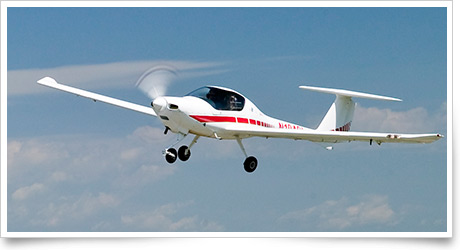| The following stories from the Aug. 31, 2012, edition of AOPA ePilot were provided to AOPA members who expressed an interest in the particular subject areas. Any AOPA member can receive information tailored to their areas of interest by updating their preferences online |
training tipsDeparting the pattern
What comes next?
Before you exit the airport area, there is still a departure to fly. It also demands exact technique.
Ask many pilots to identify the legs of an airport traffic pattern. You will most often hear five named: upwind, crosswind, downwind, base, and final legs.
There's a sixth, with its own recommended altitudes and procedures: the departure leg. Fly it properly to add predictability and safety to operations near the airport.
The departure leg is described in the Aeronautical Information Manual as “the flight path which begins after takeoff and continues straight ahead along the extended runway centerline.” The departure climb is one that “continues until reaching a point at least a half mile beyond the departure end of the runway and within 300 feet of the traffic pattern altitude.”
If you are exiting the airport area (not remaining in the traffic pattern to practice takeoffs and landings), “continue straight out, or exit with a 45-degree turn (to the left when in a left-hand traffic pattern; to the right when in a right-hand traffic pattern) beyond the departure end of the runway, after reaching pattern altitude,” says Chapter 13 of the Pilot’s Handbook of Aeronautical Knowledge.
Competent communications complement correct comings and goings, so when departing a nontowered airport, be sure that you include a statement of your intentions in a concise announcement on the common traffic advisory frequency (CTAF).
Departing from an airport with a control tower, the scenario may differ, especially if it also has radar service. For example you might be issued instructions to “maintain runway heading,” or to turn to an assigned heading when able after takeoff. In a subsequent radio call the tower controller (or a radar departure controller, after you are “handed off” to that facility) may issue new instructions, or direct you to proceed on course.
Those instructions are issued for sequencing traffic, or to get you on course in the most orderly manner possible. In either case, but be sure to acknowledge the instructions, and remember to avoid unexpected maneuvers in the traffic pattern—only one of which can disrupt an orderly flow of arrivals and departures at a bustling airport. training productsFat Gecko Co-Pilot video camera mountIf you are using a video camera to record your lessons, where do you mount it inside the airplane? The Fat Gecko Co-Pilot mount works in an aircraft that has two windows that face each other. When placed in the cockpit, the mount can suspend a video camera in the rear of the airplane looking between the seats. Once attached, the camera can be adjusted to shoot up or down, turned sideways, or reversed. The mount supports cameras up to five pounds. It sells for $74.99 at PilotMall.com. Order online or call 800/249-5730.
Note: Products listed have not been evaluated by ePilot editors unless otherwise noted. AOPA assumes no responsibility for products or services listed or for claims or actions by manufacturers or vendors. final examQuestion: How long is the center stripe on a runway?
Answer: The answer is contained in FAA Advisory Circular 150/5340-1J, Standards for Airport Markings . Runway centerline markings are white in color. The stripes are 120 feet long, and the gaps between the lines are 80 feet. Adjustments to the length of the stripes and gaps, if necessary, are made near the runway midpoint. The minimum width of the stripes is 36 inches for precision runways, 18 inches for nonprecision runways, and 12 inches for visual runways.
Got a question for our technical services staff? Email [email protected] or call the Pilot Information Center, 800/872-2672. Don’t forget the online archive of “Final Exam” questions and answers, searchable by keyword or topic. |
 You are airborne and climbing after performing the well-planned takeoff discussed in the Aug. 24
You are airborne and climbing after performing the well-planned takeoff discussed in the Aug. 24 

